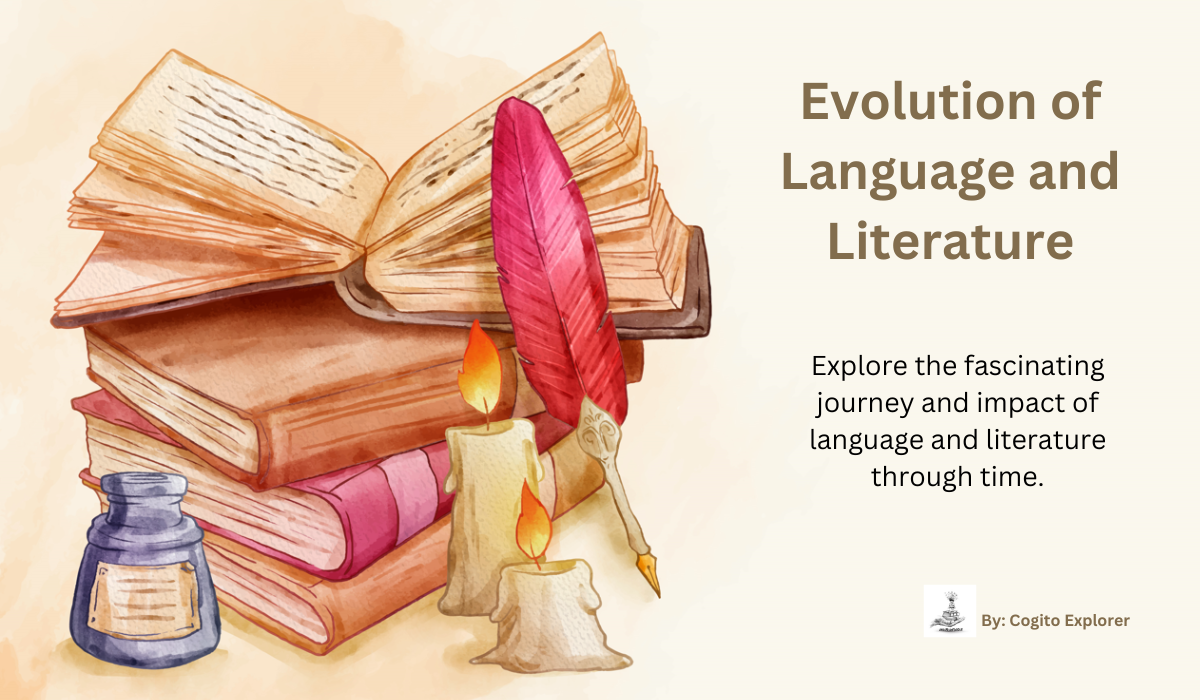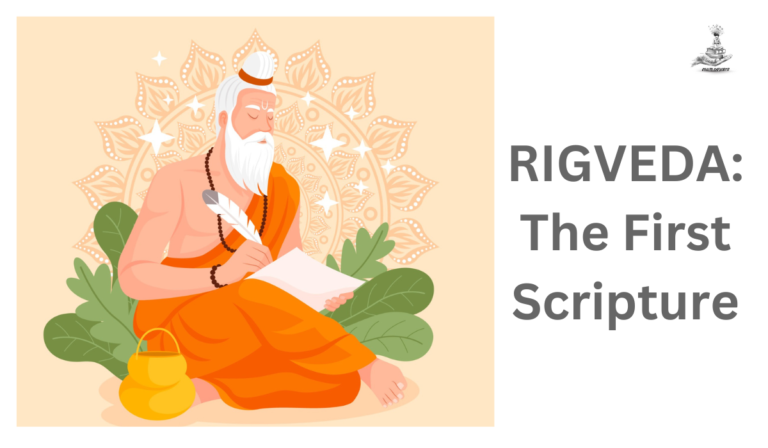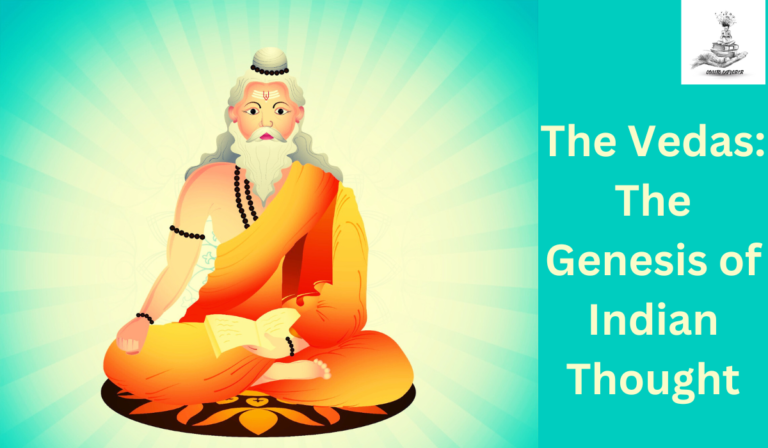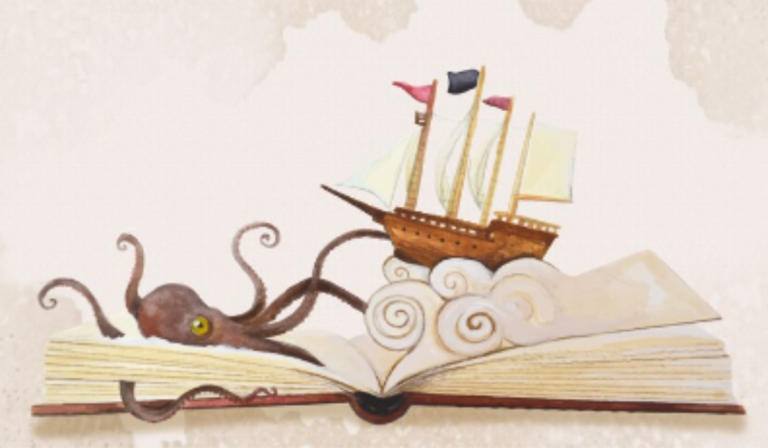The progression of Language and Literature
The origin and evolution of language and literature are complex and intertwined aspects of human culture and history. It is influenced by the development of human culture, communication needs, and technological advancements. From early forms of oral communication to the rich tapestry of global literature today, the journey reflects the continuous creativity and adaptability of the human mind. Let’s explore each of them separately:
Origin and Evolution of Language

Early Forms of Communication: The origins of language are difficult to pinpoint precisely, as there is no direct evidence of the earliest forms of human communication. However, it is widely believed that early humans communicated using a combination of gestures, body language, and vocalizations.
Emergence of Symbolic Communication: Over time, humans developed the ability to convey abstract ideas and communicate symbolically. This likely involved the use of simple symbols and eventually the development of more complex linguistic structures.
Evolution of Proto languages: The evolution of languages occurred gradually, with different communities developing their unique linguistic systems. Linguists theorize the existence of proto-languages – ancestral languages from which modern languages descended.
Cultural and Social Influences: Language evolution is influenced by cultural, social, and environmental factors. As human societies became more complex, languages diversified to meet the needs of communication within those societies.
Writing Systems: The development of writing systems marked a significant leap in the evolution of language. Early writing systems, such as cuneiform in Mesopotamia or hieroglyphics in ancient Egypt, allowed for the preservation and dissemination of information.
Prehistoric Communication: Prehistoric communication refers to the methods and means by which early human societies conveyed information before the advent of written language and recorded history. They likely communicated through gestures, body language, and vocalizations before the development of fully structured languages.
Proto languages
Even though Proto-languages are considered hypothetical languages, they are believed to be the common ancestral languages from which a group of related languages evolved. The study of these languages gives brief insights into the communication continuum. Linguists use comparative linguistics and the study of language families to reconstruct proto-languages. Here are some notable examples:
Proto-Indo-European (PIE)
Proto-Afro-Asiatic
Proto-Sino-Tibetan
The Proto-Sino-Tibetan language is a reconstructed common ancestor of the Sino-Tibetan language family, which includes Chinese, Tibetan, and Burmese. Its possible origin is often associated with East Asia. The emergence of Proto-Sino-Tibetan was several thousand years ago. As with other language families, various branches of the Sino-Tibetan family diverged as populations migrated and adapted to different environments.
Proto-Bantu
The Bantu languages spoken in sub-Saharan Africa descend from the reconstructed common ancestor known as Proto-Bantu. Scholars often associate its possible origin with the region around the border of present-day Nigeria and Cameroon. Estimated to have existed around 3000–5000 years ago, Proto-Bantu played a crucial role in the spread of Bantu languages across a large part of Africa, with each subgroup developing its distinct characteristics during the Bantu migration.
Proto-Uralic
Proto-Uralic is the reconstructed common ancestor of the Uralic language family, which includes Finnish, Hungarian, and Estonian. Its possible origin is often associated with the Ural Mountains region. It is estimated to have existed around 4000–7000 years ago. The Uralic languages diversified as various groups migrated and settled in different parts of northeastern Europe and western Siberia.
Proto-Kartvelian
Proto-Kartvelian is the reconstructed common ancestor of the Kartvelian language family, which includes Georgian, Mingrelian, and Laz. The possible origin is often associated with the South Caucasus region. Proto-Kartvelian is thought to have existed around 5,000 years ago. The Kartvelian languages developed unique features as they evolved in the mountainous areas of the South Caucasus.
Proto-Dravidian
Proto-Algonquian
The reconstructed common ancestor of the Algonquian language family, known as Proto-Algonquian, underlies the languages spoken by various Native American tribes. Scholars often associate its possible origin with the northeastern regions of North America. Proto-Algonquian is estimated to have existed around 3,000–4,000 years ago. The Algonquian languages, spanning from the Atlantic Coast to the Great Plains, showcase a wide geographical presence.
Proto-Austronesian
Proto-Austronesian is the reconstructed common ancestor of the Austronesian language family, which includes languages spoken in Southeast Asia, Oceania, and parts of Madagascar. The possible origin is often associated with Taiwan. It is estimated to have existed around 4,000–6,000 years ago. The Austronesian languages spread across a vast area through maritime migrations.
Medieval and Renaissance Linguistic Developments (500 CE – 1500 CE)
- Old English and Middle English: The Germanic language Old English evolved into Middle English after the Norman Conquest. Middle English contributed to the development of modern English.
- Vulgar Latin and Romance Languages: Vulgar Latin, the spoken form of Latin, gradually transformed into the Romance languages such as French, Italian, Spanish, and Portuguese.
- Arabic as a Lingua Franca: Arabic became a significant lingua franca in the Islamic world, fostering cultural and scientific advancements during the Islamic Golden Age.
Early Modern Period and Standardization (1500 CE – 1800 CE)
- Printing Press and Language Standardization: The invention of the printing press in the 15th century played a crucial role in the standardization of languages, making literature and knowledge more widely accessible.
- Rise of National Languages: The Renaissance and the emergence of nation-states contributed to the standardization and codification of national languages, such as English, French, and German.
19th Century to Present: Globalization and Language Evolution (1800 CE – Present)
- Colonial Influence and Language Shifts: Colonialism led to language shifts and the spread of European languages to different parts of the world, impacting indigenous languages.
- Globalization and Lingua Francas: English, due to the influence of the British Empire and later the United States, became a global lingua franca, used in international business, science, and diplomacy.
- Language Revitalization Movements: Efforts to revitalize endangered languages have emerged, recognizing the importance of linguistic diversity and cultural heritage.
- Digital Communication and New Language Varieties: The digital age has given rise to new forms of communication, including internet slang, emojis, and abbreviated language, influencing linguistic evolution.
Languages continue to evolve dynamically, reflecting cultural, social, and technological changes. The study of historical linguistics and the development of language remains a vibrant field, contributing to our understanding of human history and communication.
Writing Systems
The writing system refers to a set of visual symbols used to represent the elements or sounds of a language. It can be divided into categories such as logographic (characters represent whole words or morphemes), syllabic (characters represent syllables), or alphabetic (characters represent individual phonemes or sounds).
The ancient world was home to various civilizations, with their unique system for writing.

Proto-Writing Systems (3300 BCE – 2600 BCE)
- Sumerian Cuneiform: Originating in Sumer (modern-day Iraq), cuneiform is one of the earliest writing systems. Around 3300 BCE, the Sumerians began using wedge-shaped impressions on clay tablets for record-keeping and administrative purposes.
- Egyptian Hieroglyphs: Hieroglyphs emerged in ancient Egypt around 3300 BCE. These pictorial symbols were initially used for monumental inscriptions and later evolved into a more versatile script for religious texts and administrative records.
Early Writing Systems (2600 BCE – 1200 BCE)
- Akkadian Cuneiform: The Akkadians adopted Sumerian cuneiform but adapted it to their Semitic language. This system became prevalent in the Akkadian Empire (24th century BCE) and later civilizations in the region.
- Indus Script: The Indus script, found in the ancient Indus Valley (3300–1300 BCE), remains undeciphered. It was likely used for administrative and religious purposes, evidenced by seals and inscriptions.
Alphabets and Phonetics (2000 BCE – 600 BCE)
- Phoenician Alphabet: Around 1200 BCE, the Phoenicians developed one of the earliest alphabets, consisting of consonants. This script significantly influenced the development of later alphabets in the Mediterranean region.
- Greek Alphabet: The Greeks adopted and modified the Phoenician alphabet around the 8th century BCE, introducing vowels. The Greek alphabet became the foundation for many European scripts.
- Brahmi Script: Emerging around the 3rd century BCE, the Brahmi script was used in ancient India. It influenced various scripts in the Indian subcontinent, including Devanagari.
Classical Writing Systems (600 BCE – 600 CE)
- Latin Alphabet: Evolving from the Greek alphabet, the Latin alphabet became the standard script for the Roman Empire. It has been adapted for numerous languages, serving as the basis for modern European scripts.
- Chinese Characters: Chinese characters, traced back to the Shang Dynasty (c. 1600–1046 BCE), evolved into a logographic system with thousands of characters representing morphemes or concepts.
Medieval Scripts (600 CE – 1500 CE)
- Arabic Script: The Arabic script, developed in the 4th century CE, became the writing system for the Arabic language and played a crucial role in the spread of Islamic civilization.
- Cyrillic Script: Created by Saints Cyril and Methodius in the 9th century, the Cyrillic script was designed for the Slavic languages and is used in various Eastern European languages.
Renaissance to Modern Scripts (1400 CE – Present)
- Printing Press and Latin Script: The invention of the printing press in the 15th century revolutionized script dissemination, leading to the dominance of the Latin script in printed material.
- Hangul: King Sejong the Great introduced Hangul as the Korean script in the 15th century, promoting literacy and easing the complexity of Chinese characters.
- Devanagari Script: Evolving from the Brahmi script, Devanagari became the writing system for Sanskrit and several modern Indian languages.
Modern Alphabets and Script
The 19th and 20th centuries witnessed the standardization of scripts for many languages worldwide, often influenced by colonial histories and linguistic reforms.
In the contemporary era, digital technology has led to the creation of new writing systems and the global dominance of scripts like the Latin alphabet in online communication. The history of writing systems reflects the cultural, linguistic, and technological evolution of human societies over millennia.
Origin and Evolution of Literature
The origin and evolution of literature is a complex and fascinating journey that spans thousands of years and encompasses diverse cultures around the world.
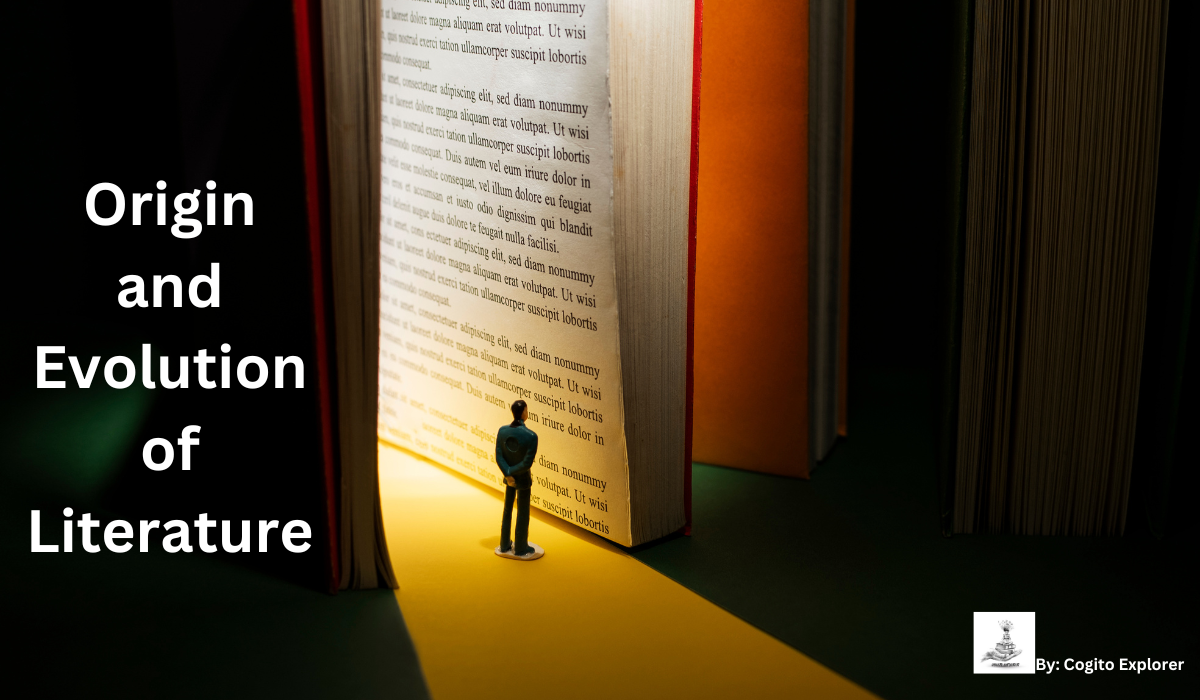
- Oral Tradition: Before the advent of writing, literature primarily existed in oral form. Generations passed down stories, myths, and cultural histories through spoken words.. This oral tradition played a crucial role in preserving cultural identity and transmitting knowledge.
- Early Written Literature: With the development of writing systems, literature could be recorded and preserved. Early examples include epic poems like the “Epic of Gilgamesh” in Mesopotamia or the “Iliad” and “Odyssey” in ancient Greece.
- Classical Literature: Ancient civilizations, such as those in Greece, Rome, India, and China, produced classical literature that laid the foundation for various literary genres. Philosophical works, plays, poetry, and historical narratives were significant during this period.
- Middle Ages and Renaissance: The Middle Ages saw the emergence of literature in vernacular languages, such as the works of Dante Alighieri and Geoffrey Chaucer. The Renaissance period witnessed a revival of classical literature and the exploration of new literary forms.
- Modern and Contemporary Literature: The evolution of literature continued through various movements and periods, including the Enlightenment, Romanticism, Realism, Modernism, and Postmodernism. Each era brought new ideas, styles, and themes to the literary landscape.
- Globalization and Diversification: In the contemporary era, literature has become increasingly diverse, with contributions from authors worldwide. The globalization of literature has led to the exploration of diverse cultures, perspectives, and storytelling techniques.
It is a vast and complex expedition involving various cultures, languages, and forms of expression. Here is a broad overview of the development of literature from its earliest forms to the present day:
Oral Tradition (Ancient Period)
Before the advent of writing, literature primarily existed in the form of oral traditions. Examples include the epic of Gilgamesh in Mesopotamia, the Iliad and the Odyssey in ancient Greece, and the Mahabharata and Ramayana in ancient India.
Early Written Literature (Ancient Period)
The transition from oral to written literature marked a significant development. Early civilizations, such as the Sumerians, Egyptians, and ancient Chinese, created written texts on clay tablets, papyrus scrolls, and bamboo slips. Religious texts, legal codes, and epic narratives emerged during this period.
Classical Literature (Greco-Roman Period)
Ancient Greece and Rome produced classical literature that laid the foundation for Western literary traditions. Greek tragedies by playwrights like Aeschylus and Sophocles, comedies by Aristophanes, and the works of philosophers like Plato and Aristotle are notable examples. In Rome, Virgil’s “Aeneid” and the poetry of Ovid and Horace are key contributions.
Middle Ages and Renaissance (Medieval and Early Modern Periods)
The Middle Ages saw the dominance of religious and chivalric literature, including works like Dante Alighieri’s “Divine Comedy” and Geoffrey Chaucer’s “Canterbury Tales.” The Renaissance witnessed a revival of classical literature and the emergence of humanism, with authors like William Shakespeare contributing to the English literary canon.
Enlightenment and Romanticism (18th and 19th Centuries)
The Enlightenment emphasized reason, science, and individual rights, leading to the rise of philosophical literature. Romanticism, a reaction against Enlightenment ideals, celebrated emotion, nature, and the individual. Prominent authors include Voltaire, Rousseau, Mary Shelley, Edgar Allan Poe, and the poets of the Romantic era.
Realism and Naturalism (19th Century)
Realism and Naturalism emerged as literary movements, depicting everyday life and exploring the impact of environment and heredity on characters. Authors like Gustave Flaubert, Leo Tolstoy, and Émile Zola embraced these movements, providing detailed observations of society.
Modernism (Early 20th Century)
Modernist literature challenged traditional narrative structures and explored subjective experiences. Writers like James Joyce, Virginia Woolf, and T.S. Eliot experimented with stream-of-consciousness, fragmentation, and symbolism. Modernist literature often reflected the disillusionment following World War I. Rabindranath Tagore, a polymath from India, made significant contributions to literature.
Postmodernism (Mid to Late 20th Century)
Postmodern literature rejected grand narratives and embraced metafiction, intertextuality, and self-reflexivity. Authors like Italo Calvino, Salman Rushdie, and Don DeLillo played with narrative conventions and questioned the nature of reality and representation.
Contemporary Literature (Late 20th Century to Present)
Literature in the contemporary era is diverse and reflects a globalized world. Themes include identity, multiculturalism, and the impact of technology. Various genres, such as magical realism, postcolonial literature, and speculative fiction, have gained prominence. Notable authors include Haruki Murakami, Chimamanda Ngozi Adichie, J.K. Rowling, etc.
The study of language and literature is a multifaceted field that encompasses the exploration and analysis of both linguistic structures and literary works. It’s a long journey towards understanding the true nature of this evolution. We have initiated this journey and will explore the development of the way forward.

